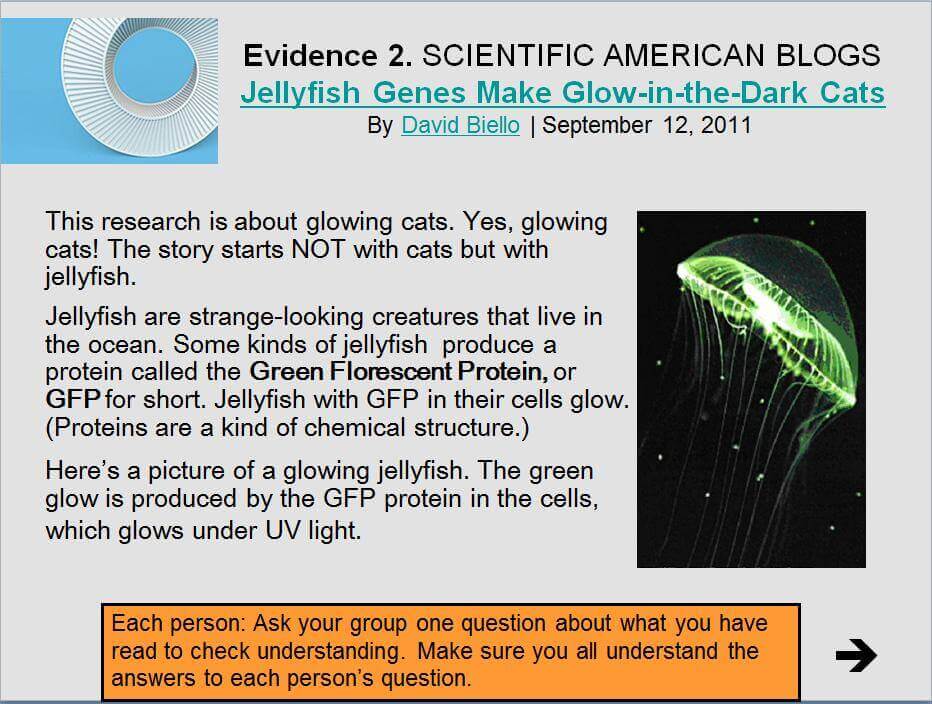To select a good model of a science phenomenon, students must be able to comprehend the evidence that is presented to them. If students are unable to comprehend a piece of evidence, then they cannot adequately decide if that evidence fits the provided model(s). To foster comprehension, we have used several types of scaffolds to promote comprehension. These scaffolds are grounded in research by scholars who focus on promoting reading comprehension through collaborative interactions. Our goal is for students to work together to make sense of the texts they are reading—whether they are reading about models or about evidence. We also aim to give the students autonomy to monitor their own sense making as they work together in a community of learners.
We also use guided questioning methods in which each student asks a question to each other about what they have read, and then the students confer to ensure that they agree on the answer. Teachers encourage students to carefully explore any disagreements they might have. An example is shown to the right from our nucleus lesson in the cells unit.
Another method is the use of scripted cooperation (O'Donnell, 1999). In scripted cooperation, one student summarizes a section of material to a partner, and the partner checks the summary, suggesting any additions or modifications to capture the core ideas.
PRACCIS lessons also incorporate brief brief multiple choice or short answer questions that students must answer together before moving on; sometimes these are in the form of quizzes that must be answered correctly before students can move on to consider how the evidence is related to the model or models under consideration. When students are working together to make sense of evidence, we have found that multiple-choice questions can spur discussion about the meaning of the evidence, about what the scientists have done exactly, and so on. Well-crafted questions can direct students to think about and productively discuss important facets of studies. As teachers design these questions, they must be sure to draw out the core ideas within each piece of evidence. It is important that students and teachers avoid getting bogged down in every detail of a piece of evidence, but rather focus on the most important points. Once students confer with one another on their answers they can determine if comprehension of the evidence is successful and they can move forward and decide how that piece of evidence fits with the provided model(s).




